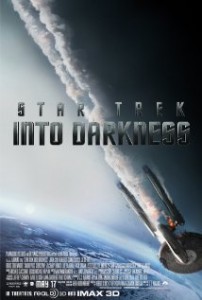 Whether we know it or not, we all respond to resonance in story telling. “What’s resonance?” you ask. To borrow from David Farland’s wonderful novel, Drawing on the Power of Resonance in Writing,
Whether we know it or not, we all respond to resonance in story telling. “What’s resonance?” you ask. To borrow from David Farland’s wonderful novel, Drawing on the Power of Resonance in Writing,
All successful writers use resonance to enhance their stories by drawing power from stories that came before, by resonating with their readers’ experiences, and by resonating within their own works.
Farland, David (2012-12-09). Drawing on the Power of Resonance in Writing (Kindle Locations 79-82). . Kindle Edition.
We feel powerful emotions when we read a book that somehow resembles other works that we love.
Farland, David (2012-12-09). Drawing on the Power of Resonance in Writing (Kindle Locations 100-101). . Kindle Edition.
So, what are you going to do when you want to start fresh for one of the most popular franchises ever? Tell your own story, but make sure it resonates with what came before. Star Trek: Into Darkness excels at this.
SPOILER ALERT: THIS POST TALKS IN DETAIL ABOUT STAR TREK: INTO DARKNESS THERE WILL BE SPOILERS SO IF YOU DON’T WANT TO KNOW, STOP READING NOW. I’LL FORGIVE YOU. GO WATCH THE MOVIE AND COME BACK.
You have been warned.
Love or hate the rebooted Star Trek, you have to admire the talent that went behind creating it. The first movie set the franchise on its head. Star Trek: Into Darkness continues this seeming disregard for the prior Star Trek universe, but if you dissect the movie, you can tell that isn’t the case.
Let me start with an apology. Because Into Darkness is still in theatres, I’m sure I didn’t catch all the references. For some reasons, the people in the seats near mine objected to my flashlight and incessant note taking. But I think my barely legible notes will do well to illustrate the masterful use of resonance in this movie.
Star Trek: Into Darkness starts with a scene that could have been left on the cutting room floor from Raiders of the Lost Arc. Kirk and Bones have stolen a cultural icon, one they aren’t even sure what it is, and are being chased by angry spear wielding natives. See, the similarity to Raiders? No? Substitute Trek’s white-skinned natives for the dark-skinned ones in Raiders and the scroll from Trek with the little gold statue Indy steals before the rock comes rolling down. While Kirk and Bones don’t jump into a plane and fly away. they do swim down to the Enterprise and fly away.
What does director J.J. Abrams get from starting like this? A couple of things. He’s setting himself apart from the Trek movies that have come before. He’s also promising us that this Trek will be an action adventure movie in space. Abrams resoundingly delivers on this promise.
Even with his apparent disregard for the prior Trek universe (you know, the one he blew up), Abrams constantly refers back to it. One of the challenges Abrams has with his reboot is giving us characters that resemble, at least at first, the ones we know and love from the original Star Trek, and then developing them in a new direction based on the universe changes. But some truths remain constant. Kirk remains a womanizer. Bones isn’t keen on transporters.
When Kirk, Spock and Uhura need to go to Cronos, the Klingon home world, they take two security officers. Those officers happen to be the bullies who beat up Kirk in the first reboot before Christopher Pike convinces Kirk to join Star Fleet. The ship they take is from the “Mudd incident.” Harry Mudd, of course, featured heavily in the original series. In Season 1, Episode 6, Mudd’s Women, and Season 2, Episode 8, I, Mudd, the irrascable conman, Harry Mudd plagues Kirk and his crew. The quick one line encompasses two of the original Trek episodes.
When they arrive at Cronos. we see that the moon. Praxis, has already exploded. Even though Abrams has foreclosed a remake of Star Trek VI: The Undiscovered County by already having the moon explode, he references the prior movie. The audience already knows why the moon exploded, and Into Darkness doesn’t have to delve into that bit of history.
The Klingons themselves call back to the Star Trek Next Generation ones. There is a similarity in design, but makeup designer Neville Page takes them up a level. These Kilngons are even more kick butt, not that I had thought that possible until I saw these. The gold accents to the skull ridges makes them an edgier version.
Bones experiments on a dead tribble. Who can forget the tribbles and the trouble they caused in The Trouble with Tribbles, Season 2, Episode 15? Because this is a reboot, rather than the plague the tribbles were in the original series, a tribble saves the day, sort of.
Of course, the biggest reveal and resonance in the story is…
BONUS SPOILER ALERT: Really if you haven’t seen the movie yet, don’t read past this point.
…that the villain, thought to be a rouge Star Fleet member, is actually Khan Noonien Singh. Khan is probably the most love nemesis from the original series and movies. Khan first appeared in Season 1, Episode 22’s Space Seed, and who could forget the movie: Star Trek, Wrath of Khan?
Once Khan’s identity is revealed there is a logical and inevitable progression to a scene that could have been twisted right out of Wrath of Khan. Twisted, but still almost beat for beat the same.
Kirk faces the Kobayashi Maru situation when the Dreadnaught class ship pounds Enterprise. His ship is crippled and his crew about to be exterminated. It’s a scenario he’s cheated in both the original Trek and the reboot. This time he doesn’t get to cheat. He loses.
Abrams doesn’t let you forget that this is an action adventure movie in space. The dying Enterprise’s engines finally rebooting, the ship falls through the clouds. You can hear the squawk of chatter as Spock tries to get Enterprise airworthy again. The camera stays above the cloud bank. Then a triumphant Enterprise roars through the clouds and gains altitude. While Abrams didn’t have the ship silhouetted by the moon, like they did with the Batplane in Batman, the resonance rings true. We know what’s coming. A kick butt fight between the hero and villain. Again, Abrams delivers.
Even the final moments of the movie refers to other ones. There’s a paraphrasing of a The Princess Bride quote, though I was really hoping for the actual quote; “You’ve been mostly dead…” Still, Bones came close enough. And of course, the movie ends with the Enterprise starting its 5 year journey to boldly go where no one has gone before.
Abrams’ careful interweaving of elements of the prior Trek Universe into his reboot has me looking forward to the next installment of the new franchise.
The Take Home: Resonance matters. It is probably the most compelling tool we have in our writer’s tool box. So, how do you successfully retell a classic? By paying intentional homage to what came before. If the story is too “new” your audience will reject it. By carefully weaving elements of what came before into the new story, you give the readers a frame of reference, make them certain promises, and give them a comfort zone from which to relax and launch themselves into your retelling of a classic.




